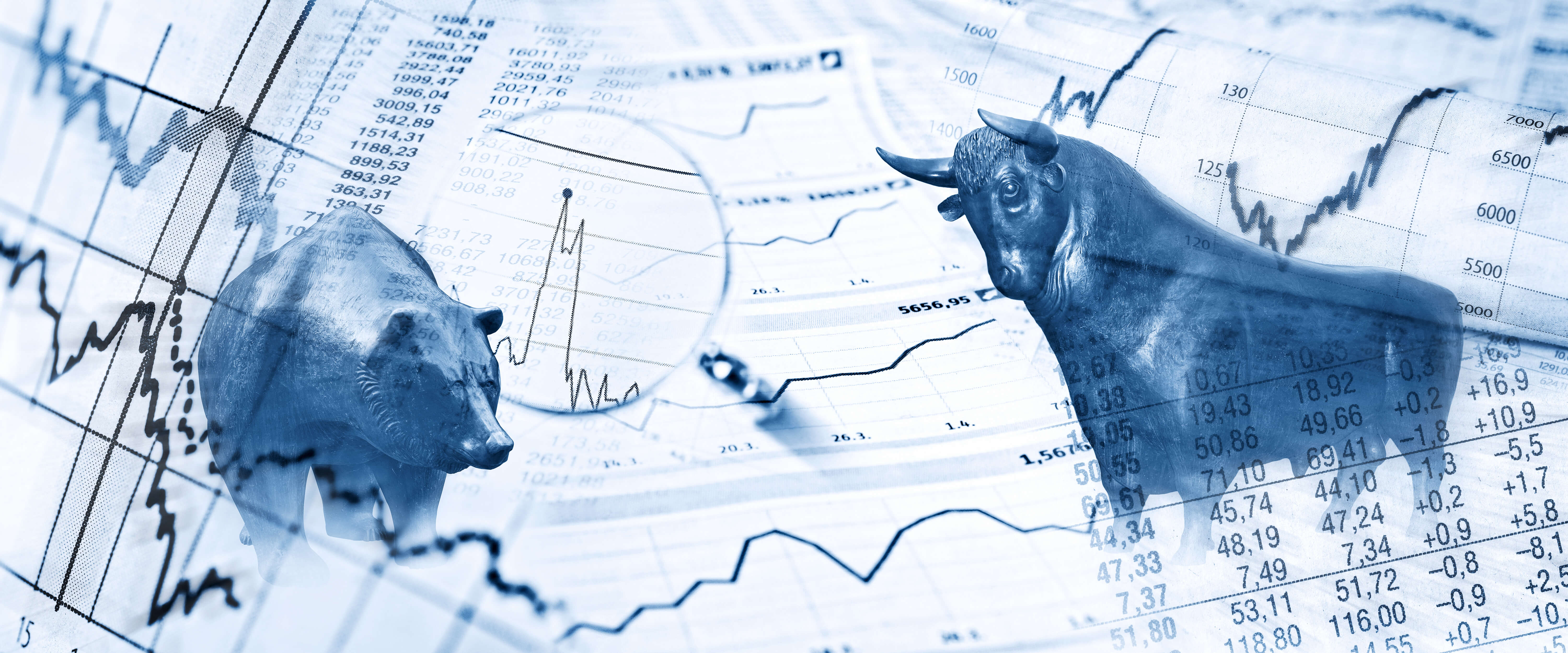How to Survive a Volatile Market

Financial terminology 101:
Volatility (n): The tendency of prices to go up and down sharply over time.
Given that definition, it’s pretty clear that we, as investors actually like SOME volatility (the “up”-part). Today’s blog post is directed to the majority who really don’t like the “down” part of the volatility equation. Those who enjoy that part (and who probably also enjoy paper cuts, motion sickness, and receiving fruitcake at Christmas) will likely not benefit from reading further.
Downside volatility is something we’re stuck with as a reality in the markets. Surviving “corrections”, “bear markets” and “crashes” takes skill and preparation. Employing the following four strategies will make the less-than-pleasant times as an investor that much more tolerable.
Watch your Language
Even the most entry-level self-help guru will tell you that how you frame an adverse situation will ultimately impact your success in overcoming it.
- I’ve lost “___” in the market.
- The markets are down “____” percent.
- This is the worst December since “______”.
On any given day (in December), all three of these mantras can be chanted. Even when things are going well, there will be hours, minutes, seconds when ‘the market’ ticks downward. Comparisons with previous years, previous months and previous days are, ultimately, of no help.
Another dysfunction applies mainly to people who have been investing for a long time and have significant dollars invested. Example: “I lost $50,000 – that’s my annual salary!” In actuality, your million-dollar portfolio has retreated by 5%. If you’d had a TWO million dollar portfolio, this market movement would have ‘cost’ you TWICE your salary. Is that worse, or better? (hint: two million dollars is bigger than one million dollars and most objective observers would say that a bigger portfolio is better). Don’t assess market movements in dollars. Use percentages.
As I write this, most stock indexes are more than 10 percent lower than their high level this year. Frankly, this does not represent a loss to anyone who has been investing for at least a couple of years. A couple, brand-new to our firm, sat with me a couple of nights ago. The husband told me that before the market moved lower, he’d made 36% on his portfolio. With the most recent downturn, he was still up by 26%. What a refreshing way of using language constructively! Frame your results over time periods that will motivate you. Don’t selectively limit your period of reference to something that’s just going to sit in your stomach like old fruitcake.
Change the Channel
There is absolutely no newsworthiness in an aircraft that lands safely. The poor pilot who lands upside down is the guy who makes the evening news. (short editorial: as a pilot, I’m amazed that the slightest mishap with an aircraft makes the front page, whereas truly disastrous car crashes hardly get a mention).
Long story short, the markets get very little coverage during the slightly longer periods when they experience ‘upward volatility’. Get a good amount of downturn and every news channel is suddenly CNBC.
Reliance on the media for your investment information is a sure recipe for underperformance. Simply put, the more dire the market is portrayed, and the more unanimous the talking heads are that things are going to hell in a hand basket, the brighter the future becomes.
A recent study issued by Dalbar showed that over a 30 year period, the average stock mutual fund investor made an annualized 3.98% while the S&P 500 index went up an average of 10.16% over the same period[1]. Most of that difference is behavioral, and it stands to reason: Anyone relying on media or water cooler conversations will be at their most pessimistic at exactly the time they should be at their most OPTIMISTIC.
Also, if a churning market makes you motion sick, remove the stock market widget from your screensaver.
Make Volatility a part of your plan
A surefire foil to ‘volatility anxiety’ is to plan for it well in advance. If you’re saving for retirement and you’re 40 years old, you will be investing your money for another 40-50 years. Given the fact that the market experiences a correction of greater than 10 percent once every 1.5 years on average, you should plan on riding out around 30 stock market corrections in your retirement assets.
In the 38 years since 1980, the S&P 500 has gone way up. In fact, it’s been up 29 years out of those 38. The AVERAGE intra-year downturn during those 38 years has been -13.8 percent[2]. If you invest in the market, plan on volatility.
Any long-term investment plan should include some degree of stress-testing for extended downturns. The plan should NOT be based on an assumption that everything is good – or even average – for any given period. If you work with an advisor, make sure they are explaining to you how they account for volatility and uncertainty in your plan.
Use volatility to your advantage
Two strategies in particular allow you to actually harness volatility in a way that just might make you warm up to it. The first is called “Dollar Cost Averaging,” and it works like this:
Joe has $600 and he purchases shares in XYZ. These shares cost $50 each, so he purchases 12 shares of XYZ.
Margaret also has $600, but decides to purchase XYZ a bit at a time – $100 monthly over the course of six months.
At the end of the very volatile six-month period, Margaret has purchased 14.2 shares of the stock. She has 2.2 more shares than Joe, who purchased the same dollar amount, since she took advantage of a volatile market to purchase more shares in the months when XYZ was cheap, and fewer shares in the months when the price of XYZ was high.
The great thing about dollar cost averaging is that most people already employ this strategy, whether they know it or not. Monthly payroll deferrals to employer plans like 401(k) or 403(b) plans fit this description nicely.
Obviously, the two things that are necessary to make a dollar-cost-averaging plan work well are (1) volatility and (2) stick-to-it-iveness on the part of the investor. If Margaret became nervous about the February and April downturns and decided not to do her $100 investment in those months, she would not have fared nearly as well.
Another strategy for harnessing volatility to your advantage is rebalancing. Systematically bringing a portfolio’s allocation back to a target can work to the investor’s advantage.
If Linda’s portfolio starts with a target of 50% stocks and 50% bonds, it won’t stay that way over time. During periods when stocks are doing well, the percentage of her portfolio in stocks may increase beyond 50% and as a result, her bond allocation may go below 50%. By rebalancing back to 50/50, she is essentially selling some of the higher priced stocks and using the proceeds to take advantage in a dip in the relative price of bonds.
Sadly, most investors don’t execute on this very basic portfolio strategy. In the example above, if Linda’s thought is: “Why would I want to sell some of the stocks that have been doing well to go into bonds that haven’t?”, she won’t rebalance the portfolio, her risk profile will grow more aggressive, and eventually the market may move her back toward her original allocation.
In Summary
Volatility happens. Don’t just accept volatility. Don’t simply tolerate it. Harness its power and get all you deserve from your hard-fought investments.
[1] Dalbar, Inc. 2017 Quantitative Analysis of Investor Behavior
[2] Source: JP Morgan Insights, Guide to the Market, 10/31/2018 release



